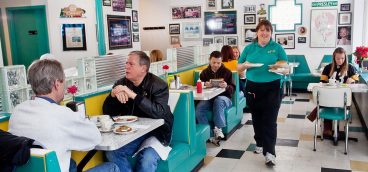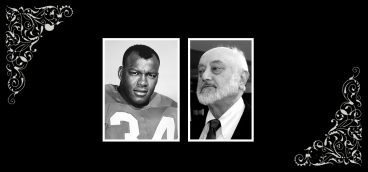Centennials don’t happen every day. For the Associated Artists of Pittsburgh it is lasting a good year and then some. In 2008 Vicky Clark curated an exhibition at The Carnegie Museum of Art, “The Popular Salon of the People,” which surveyed the history of the AAP’s Annual Exhibition and showed just how good and diverse it has been over the years.
(A valuable little catalog, still available, came with it.) Her show was two years early, to get us all in the mood. This is the actual centennial year, and it has been packed with dozens of small and large celebrations, centering on the 100th Annual in the Heinz Galleries at The Carnegie. Unlike the Carnegie International, which is handed down to the community by the museum’s authority, the Annual is handed up from the artistic roots of the region—an interesting challenge for all concerned.
The Annual is not the raison d’être for the association but is the best evidence of the health of what has come to be a grand old lady. This centennial year was so momentous that two jurors were chosen: Donald Miller, retired art and architecture critic of the Pittsburgh Post-Gazette, and Al Miner, an artist and independent curator. The final selection has been broadly admired as well as beautifully hung in the galleries, supervised by Dan Byers of the museum’s contemporary art department. I think for the first time the catalog has been fully illustrated in color. A success. About one third of the art actually sold, which is remarkable.
I confess to not being a fan of juried themed shows, which seem to invite artists to slip into a straitjacket, some more naturally than others. Eric Shiner, curator of the Andy Warhol Museum, dutifully juried one such at the Pittsburgh Center for the Arts. The summer show was under the auspices of the AAP, which invited its members and those belonging to the eight local guilds (Craftsmen, Fiber artists, Group A, Printmakers, Watercolorists, Sculptors, Women of Vision and the Associated Artists themselves) who operate from the Centre for the Arts, to address the broad theme of “Interplay.” The theme was appropriate since this was the first collaborative show of its kind between these bodies, but somewhat broad and flabby in concept. It did give Shiner something of a free hand in the jurying, however, and he identified some exceptional submissions. But themed shows ought to be by invitation, and curated rather than juried. This should result in tighter, more interesting exhibitions, if perhaps with fewer surprises. Lots of prizes, almost too many, made the opening night party more than usually jolly, distributed by actor David Conrad.
The final major show of this centennial year is currently at the Westmoreland Museum of American Art and is historical in nature. The first Associated Annual, during which the AAP was incorporated, was held in 1910 in the Pittsburgh Grand Opera House downtown, now home to the Warner Center. The success of that show resulted in the subsequent Annual taking place in the Carnegie Institute, where, with only four subsequent interruptions, it has been presented ever since. Barbara Jones, the Westmoreland’s chief curator, has consulted the published catalogs of the first two shows and based the current exhibition on the artists who were shown there. A published list may not exactly correspond to what was actually hung, but is largely accurate. It is almost impossible to recreate any exhibition after the event, and Jones has taken the sensible course of selecting comparable work by the same artists. The show is about painting and exactly follows the taste of the day.
There were no surprises then—except that the work was as good as it was. Mixes of professional and amateur artists are often problematic. Even allowing for the fact that Jones was going to select the best works she could find (drawing on the museum’s holdings, along with those of The Carnegie Museum of Art and regional private collectors), we have a good sense of the character of these two earlier shows. It is worth remembering Virginia Woolf’s famous remark at the time of the first Post-Impressionist show (1910) in London: “On or about December 1910, the human character changed…”. Pittsburgh, with a number of Carnegie Internationals already under its belt, with committees and advisors preparing such shows in London, Munich, Paris and elsewhere in Europe, was already well prepared. It had a substantial body of practicing artists and, maybe most important of all, affluent collectors to support a series of exhibitions.
The Westmoreland show will surprise those expecting something on the lines of past Associated Annuals. No abstraction, no modernism. Instead, Mary Cassatt, John Beatty, William Woodwell, Aaron Henry Gorson, Martin B. Leisser—for the main part well-traveled and highly informed artists. There are lesser-known artists, too, who once had considerable local reputations—David B. Walkley, William W. Speer and James Bonar—but who are now beginning to be further studied. So be prepared for a number of surprises in this early survey of the AAP.
“Artrageous!”—the name of the AAP centennial—has a couple of months to run its course. It has exhaustively promoted its membership and reached areas never before encountered. It has made it to Fallingwater and exhibited there, and to small local galleries throughout the region. It has discovered the art of partying. Not bad for an organization that less than 10 years ago had to give up its downtown gallery and retrench. Enthusiasm leads to a brighter future.
Associated Artists of Pittsburgh: Celebrating a Century of Art, continues at The Westmoreland Museum of American Art through January 9, 2011.





